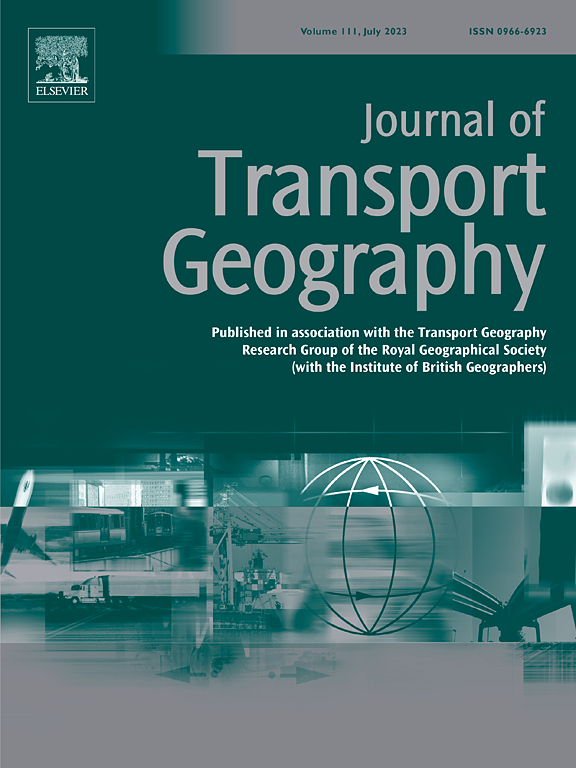Subway expansion, residential relocation, and travel behavior: Causal evidence from China
IF 5.7
2区 工程技术
Q1 ECONOMICS
引用次数: 0
Abstract
The literature regarding the outcomes of rail transit investments varies between those who praise them for improving accessibility and those who criticize them for excluding residents who would benefit more from the improvements. Through the lens of residential relocation, this study examines the impact of rail transit investments by taking both sides of the argument into account. Based on the data of 71 new subway stations and individual residential trajectory in Shenzhen, we employ the difference-in-differences method to estimate the number of residents who moved into and out of neighborhoods served by these stations, as well as the behavioral outcomes associated with these relocations. The results indicate that the opening of new subway stations attracted newcomers to nearby neighborhoods, especially those who previously enjoyed transit proximity and exhibited greater reliance on it. Meanwhile, there was a significant decline in out-migration among existing residents after new stations opened. No evidence of transit-induced displacement was observed in terms of relocation size or direction. Instead, the attraction effects of new station openings were more pronounced in low-rent neighborhoods. However, we found that those moving-out residents, who lost subway access, significantly reduced subway usage and spent less time on non-work trips after relocating.
地铁扩建、居民搬迁与出行行为:来自中国的因果证据
关于轨道交通投资结果的文献各不相同,有人称赞它们改善了可达性,也有人批评它们排除了从改善中受益更多的居民。通过住宅搬迁的镜头,本研究考察了轨道交通投资的影响,考虑到双方的论点。基于深圳71个新建地铁站的数据和个人居住轨迹,本文采用差分法估计了这些地铁站所服务的社区的迁入和迁出人数,以及与这些迁出相关的行为结果。结果表明,新地铁站的开通吸引了附近社区的新移民,尤其是那些以前享受交通便利并对其表现出更大依赖的人。与此同时,在新站开通后,现有居民的外迁人数显著下降。在迁移的大小或方向方面,没有观察到过境引起的位移的证据。相反,新车站开业的吸引效应在低租金社区更为明显。然而,我们发现,那些失去地铁通道的迁出居民在搬迁后显著减少了地铁的使用,并减少了非工作出行的时间。
本文章由计算机程序翻译,如有差异,请以英文原文为准。
求助全文
约1分钟内获得全文
求助全文
来源期刊

Journal of Transport Geography
Multiple-
CiteScore
11.50
自引率
11.50%
发文量
197
期刊介绍:
A major resurgence has occurred in transport geography in the wake of political and policy changes, huge transport infrastructure projects and responses to urban traffic congestion. The Journal of Transport Geography provides a central focus for developments in this rapidly expanding sub-discipline.
 求助内容:
求助内容: 应助结果提醒方式:
应助结果提醒方式:


